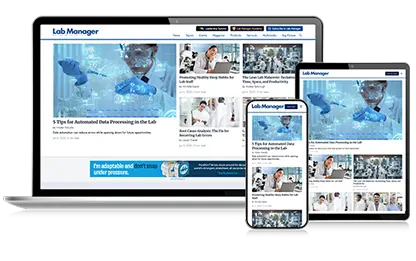Fluorescence microscopy is an essential tool in many scientific fields, allowing researchers to visualize specific components of a specimen with enhanced clarity and detail. This guide will walk you through how to use a fluorescence microscope properly and safely, ensuring you get the most out of your equipment.
What Is a Fluorescence Microscope?
In fluorescence microscopy, fluorophores are used to reflect an image of a given sample or specimen. A fluorescence microscope is typically composed of a specialized light source—often a mercury or xenon lamp—as well as excitation and emission filters, and a dichroic mirror. These components work together to make certain structures in a sample visible.
Step-by-Step Instructions for Using a Fluorescence Microscope
Step 1: Set Up the Microscope
Remove the Protective Cover: Start by removing the protective cover of your fluorescence microscope.
Adjust Power Settings: Ensure the microscope is set to low power before plugging it in and switching it on.
Turn On the Light Source: Turn on the mercury or xenon lamp and wait approximately fifteen minutes for it to reach full brightness. This ensures you get an even and strong illumination of your sample.
Warning: Mercury lamps release extremely potent and visible UV radiation, so avoid looking at them directly. Do not disassemble the lamp housing.
Activate the Focus Box: Switch on the motorized focus box.
Step 2: Place and Focus Your Sample
Place the Slide: Carefully place your prepared slide on the stage and secure it with the stage clips.
Focus the Sample: Peek through the eyepiece and use the coarse adjustment knobs to raise or lower the stage. Fine adjustment knobs are used to get a sharper, clearer image.
Filter Safety: Do not look into the microscope’s eyepieces when changing filters, as certain filters can reflect UV rays directly to your eyes.
Change Objectives and Filters: If you need to switch to a different objective, do so by holding the collar of the microscope’s nosepiece—avoid putting pressure on the objective lenses themselves to prevent misalignment. Make sure to change filters while the microscope is set at low power. If adjusting the condenser for Kohler illumination, do not adjust the stage knobs.
Step 3: Capture Images
If you need to take images of the specimen, attach a camera eyepiece to the microscope. Images can be stored on your camera’s built-in memory or a connected storage device.
Step 4: Power Down Safely
Minimum Usage Time: If you have used the microscope for at least 30 minutes, you can now switch it off. This ensures the mercury or xenon lamp is cooled properly.
Lamp Safety: Always record how many hours you’ve used the mercury lamp. Going beyond its expected lifespan can put your microscope at risk of exploding. Switching the mercury lamp on and off frequently can also reduce its lifespan, so leave it on if someone else will use it within the next two hours.
Turn Off Components: First, remove the slide from the stage, then switch off the focus control box and the mercury lamp. Note that you should wait at least half an hour before turning the fluorescence microscope back on.
Step 5: Store the Microscope
Unplug the microscope and return it to its original location. Place the protective cover back on to prevent dust and contaminants from settling on the equipment.
Using Epifluorescent Illumination with Your Fluorescence Microscope
Step 1: Set Up the Filter
Place the Appropriate Filter: If you are going to use an epi-polarization filter, make sure to switch off the mercury lamp first. Only look through the eyepiece after replacing the filter.
Focus on the Sample: You can use bright field or other techniques—reflected or transmitted—to focus on your sample. Then, switch on the mercury lamp.
Select the Correct Filter Cube: Place in the correct filter cube for your microscope’s fluorochrome. Check if the analyzer slider has been detached; if not, signal intensity may be reduced.
Step 2: Remove the Nomarski Prism
If the Nomarski prism is still inserted in the space on top of your microscope’s objective, remove it. Its presence will reduce the quality of images captured by your fluorescence microscope.
Step 3: Adjust the Shutter Slider
Take out your microscope’s shutter slider and place it in the desired filter position.
Step 4: Open the Condenser Aperture
Push the control lever in to open the condenser aperture of your fluorescence microscope. Another push will open the field aperture of your condenser.
Step 5: Start Observing Your Specimen
You can now start observing your specimen. Make any necessary adjustments to optimize the view. Once finished, push the fluorescence shutter in to avoid overexposing your sample, which could lead to photobleaching. Photobleaching occurs when fluorophores lose their ability to glow after prolonged exposure to illumination.
Tips for Using a Fluorescence Microscope
- Avoid Touching the Lenses: Always handle the microscope carefully, and never touch the objective lenses with your fingers.
- Work in a Dark Environment: Fluorescence microscopy works best in a low-light environment to improve image visibility.
- Regular Maintenance: Make sure the microscope is cleaned regularly, and the light source is checked for optimal brightness.
- Proper Safety Gear: When working with UV light, ensure you use proper safety glasses to protect your eyes.
- Oil Immersion Objectives: If using oil immersion objectives, be cautious when switching to low power objectives. Oil from your slide can contaminate the objectives if the nosepiece is swung incorrectly. After use, clean the lenses with lens paper by gently dabbing off the oil—avoid wiping harshly.
Conclusion
Using a fluorescence microscope can be straightforward if you follow the proper steps and handle the equipment with care. Whether you're using it for routine diagnostics or advanced research, understanding how to properly operate and maintain your microscope will help you achieve high-quality results every time.
If you’re interested in learning more about laboratory equipment or techniques, explore more articles and resources on Lab Manager to expand your knowledge.
Make sure to have a copy of this article posted near your work table to avoid forgetting any of the important safety tips included here.
Fluorescence microscopy is an essential tool in many scientific fields, allowing researchers to visualize specific components of a specimen with enhanced clarity and detail. This guide will walk you through how to use a fluorescence microscope properly and safely, ensuring you get the most out of your equipment.
What Is a Fluorescence Microscope?
In fluorescence microscopy, fluorophores are used to reflect an image of a given sample or specimen. A fluorescence microscope is typically composed of a specialized light source—often a mercury or xenon lamp—as well as excitation and emission filters, and a dichroic mirror. These components work together to make certain structures in a sample visible.
Step-by-Step Instructions for Using a Fluorescence Microscope
Step 1: Set Up the Microscope
To continue reading this article, sign up for FREE to

Membership is FREE and provides you with instant access to eNewsletters, digital publications, article archives, and more.












